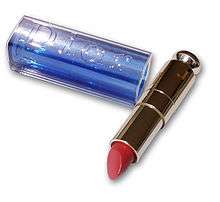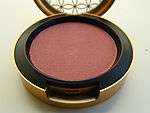紅
| ||||||||
Translingual
Han character
紅 (radical 120, 糸+3, 9 strokes, cangjie input 女火一 (VFM), four-corner 21910, composition ⿰糹工)
References
- KangXi: page 916, character 1
- Dai Kanwa Jiten: character 27243
- Dae Jaweon: page 1343, character 8
- Hanyu Da Zidian: volume 5, page 3363, character 5
- Unihan data for U+7D05
Chinese
| trad. | 紅 | |
|---|---|---|
| simp. | 红 | |
Glyph origin
Phono-semantic compound (形聲, OC *ɡoːŋ) : semantic 糹 + phonetic 工 (OC *koːŋ).
Pronunciation 1
Definitions
紅
Compounds
|
|
|
Pronunciation 2
Definitions
紅
- † Substitute character for 功 (gōng).
- † Substitute character for 工 (gōng).
- Placename in the State of Lu during the Spring and Autumn Period in Chinese history, northeast of modern Tai'an, Shandong.
Pronunciation 3
Japanese
Readings
- Go-on: ぐ (gu)
- Kan-on: こう (kō, Jōyō)
- Kan’yō-on: く (ku, Jōyō, uncommon)
- Kun: あかい (akai, 紅い); くれない (kurenai, 紅, Jōyō)←くれなゐ (kurenawi, historical); べに (beni, 紅, Jōyō); もみ (momi, 紅)
- Nanori: あかし (akashi); あかね (akane); あかり (akari); いろ (iro); かのう (kanō); くう (kū); くれ (kure); くれい (kurei); くれお (kureo); くれな (kurena); くれん (kuren); まどか (madoka); れな (rena)
Compounds
- 紅一点 (kōitten, “single point of crimson → the one different thing in a field of sameness; often refers to a lone woman in a crowd of men”)
- 紅雨 (kōu)
- 紅河 (Kōga)
- 紅花 (kōka)
- 紅霞 (kōka)
- 紅顔 (kōgan)
- 紅木 (kōki)
- 紅教 (Kōkyō)
- 紅閨 (kōkei)
- 紅血 (kōketsu)
- 紅格子 (ko-gōshi)
- 紅脂 (kōshi)
- 紅色 (kōshoku)
- 紅藻 (kōsō), 紅藻植物 (kōsō shokubutsu), 紅藻類 (kōsō-rui)
- 紅茶 (kōcha, “black tea”)
- 紅潮 (kōchō)
- 紅梅 (kōbai)
- 紅白 (kōhaku)
- 紅粉 (kōfun)
- 紅幇 (Kōhō), 紅幇 (Honpan)
- 紅帽 (kōbō)
- 紅葉 (kōyō, “autumn colors, the turning of the leaves”)
- 紅涙 (kōrui)
- 暗紅 (ankō)
- 女紅 (jokō)
- 鮮紅 (senkō)
- 丹紅 (tankō)
- 堆紅 (tsuikō)
- 剔紅 (tekikō), 剔紅 (tekkō)
- 柳緑花紅 (ryūryokukakō)
- 縷紅 (rukō), 縷紅草 (rukōsō)
- 紅蓮 (guren, “red lotus”)
- 紅型 (bingata)
- 紅絹 (momi)
- 紅葉 (momiji)
- 百日紅 (sarusuberi), 百日紅 (hyakujitsukō, “crape myrtle”)
- 爪紅 (tsumagure)
Etymology 1


| Kanji in this term |
|---|
| 紅 |
| くれない Grade: 6 |
| kun’yomi |
⟨kure no2 awi⟩ → /kurenawi/ → /kurenai/
From Old Japanese.
Shift from 呉の藍 (Kure no ai):[1][2] 呉 (Kure, “China”) + の (no, possessive particle) + 藍 (ai, “indigo”: by extension, “dye”). The safflower, from which the crimson dye was extracted, was brought to Japan from China.
Noun
紅 (hiragana くれない, rōmaji kurenai, historical hiragana くれなゐ)
- the color crimson, a vivid red edging towards pink
- Synonyms: 紅色 (kurenai-iro, kōshoku, beni-iro), 丹紅 (tankō)
- c. 759, Man'yōshū (book 19, poem 4139), text here
- 春苑紅尓保布桃花下照道尓出立𡢳嬬 [Man'yōgana]
- 春の園紅にほふ桃の花下照る道に出で立つ娘子 [Modern spelling]
- haru no sono kurenai niou momo no hana shitaderu michi ni idetatsu otome
- My whole spring arbor radiates a crimson glow: blossoms of the peach shine down on the garden path where a maiden steps in view.[3]
- the safflower (Carthamus tinctorius), from which this color is extracted
- 905, Kokin Wakashū (book 13, poem 661)
- 紅の色にはいでじ隠れ沼の下にかよひて恋は死ぬとも
- kurenai no iro ni wa ideji kakure nu no shita ni kayoite koi wa shinu to mo
- I shall not show it as a safflower flaunts its red―not though I perish of a love kept as secret as streams in a hidden marsh.[4]
- 紅の色にはいでじ隠れ沼の下にかよひて恋は死ぬとも
- 905, Kokin Wakashū (book 13, poem 661)
Derived terms
- 紅の (kurenai no, pillow word)
- 紅色 (kurenai-iro)
- 紅縅 (kurenai odoshi)
- 紅菊 (kurenai-giku)
- 紅格子 (kurenai-gōshi)
- 紅絞り (kurenai shibori)
- 紅芋茎 (kurenai zuiki, “red taro stems; red aroid”)
- 紅裾濃 (kurenai susogo)
- 紅の装束 (kurenai no sōzoku)
- 紅染, 紅染め (kurenai-zome)
- 紅匂い (kurenai nioi)
- 紅の薄様 (kurenai no usuyō)
- 紅の塵 (kurenai no chiri)
- 紅の涙 (kurenai no namida)
- 紅の葉 (kurenai no ha)
- 紅の袴 (kurenai no hakama, “red hakama”)
- 紅の筆 (kurenai no fude)
- 紅の文 (kurenai no fumi)
- 紅紅葉 (kurenai momiji)
- 薄紅 (usu-kurenai, “light pink, light crimson”)
- 唐紅, 韓紅 (kara-kurenai, “Chinese red”)
- 白紅 (shiro-kurenai)
- 爪紅, 端紅 (tsumakurenai)
- 中紅 (naka-kurenai, “medium crimson”)
- 直紅 (hita-kurenai)
- 皆紅 (minagurenai)
- 夕紅 (yū-kurenai)
Proverbs
Etymology 2
| Kanji in this term |
|---|
| 紅 |
| べに Grade: 6 |
| kun’yomi |
*/peni/ → /beni/
First attested in The Pillow Book, completed in 1002.
Shift from *heni, attested in the Wamyō Ruijushō (938 CE) with the original sense of "rouge".
The ni is definitely 丹 (ni, “red earth, cinnabar”), while the initial pe/be remains uncertain.
Noun
- the color crimson, a vivid red edging towards pink
- Synonyms: 紅色 (kurenai-iro, kōshoku, beni-iro), 丹紅 (tankō)
- Short for 紅花 (benibana). the safflower (Carthamus tinctorius), from which this color is extracted
- the crimson pigment extracted from safflower petals, used in cosmetics and as a food coloring
- Synonym: 臙脂 (enji)
- rouge (red cosmetic traditionally made from safflowers)
- Synonym: 頬紅 (hōbeni)
- lipstick, lip liner (also traditionally made from safflowers)
- Synonym: 口紅 (kuchibeni)
Derived terms
- 紅赤 (beni-aka)
- 紅あぐー (beni agū)
- 紅板 (beniita)
- 紅色 (beni-iro)
- 紅鬱金 (beni ukon)
- 紅空木 (beni utsugi)
- 紅絵 (benie)
- 紅緒 (benio)
- 紅白粉 (beni oshiroi)
- 紅貝 (benigai)
- 紅返し (benigaeshi)
- 紅萼, 紅額 (benigaku)
- 紅蟹 (benigani)
- 紅鉄漿 (benikane)
- 紅殻 (Benigara)
- 紅革, 紅皮 (benikawa)
- 紅隈 (beniguma)
- 紅栗毛 (beni kurige)
- 紅粉 (beniko)
- 紅合歓 (beni gōkan)
- 紅格子 (beni-gōshi)
- 紅鮭 (benizake), 紅鱒 (benimasu)
- 紅差し指 (benisashi yubi)
- 紅皿 (benizara)
- 紅小灰蝶 (beni shijimi)
- 紅羊歯 (beni shida)
- 紅下翅 (beni shitaba)
- 紅紫檀 (beni shitan)
- 紅絞り (beni-shibori)
- 紅生姜 (beni shōga)
- 紅天蛾 (beni suzume)
- 紅雀 (benisuzume)
- 紅摺り絵 (beni-zurie)
- 紅染, 紅染め (beni-zome)
- 紅茸 (benitake)
- 紅猪口 (beni choku), 紅猪口 (beni choko)
- 紅付け指 (benitsuke yubi)
- 紅鶴 (benizuru, “flamingo”)
- 紅天狗茸 (beni tengutake)
- 紅灯台 (beni dōdan)
- 紅の木 (beni no ki), 紅木 (beninoki)
- 紅鳩 (benibato)
- 紅花 (benibana, “safflower”)
- 紅檜 (benihi)
- 紅日陰蝶 (beni hikage)
- 紅鶸 (benihiwa)
- 紅筆 (benifude)
- 紅猿子, 紅増子 (benimashiko)
- 紅雪 (beniyuki)
- 紅林檎 (beni ringo)
- 愛嬌紅, 愛敬紅 (aikyō beni)
- 油紅 (aburabeni)
- 天が紅, 尼が紅 (ama ga beni)
- 丑紅 (ushibeni)
- 薄紅 (usubeni, “light pink, light crimson”)
- 寒紅 (kanbeni)
- 口紅 (kuchibeni)
- 笹紅 (sasabeni)
- 四方紅 (shihō beni)
- 食紅 (shokubeni)
- 卵紅 (tamagobeni)
- 爪紅, 端紅 (tsumabeni)
- 天地紅 (tenchi beni)
- 唐紅 (tōbeni)
- 練紅, 練り紅, 煉紅, 煉り紅 (neribeni)
- 血紅, 糊紅 (noribeni)
- 縁紅弁慶 (fuchibeni benkei)
- 棒紅 (bōbeni)
- 頬紅 (hōbeni)
Idioms
Etymology 4
| Kanji in this term |
|---|
| 紅 |
| もみ Grade: 6 |
| kun’yomi |
From 揉み (momi, “kneading”, stem form of verb momu), by extension from the kneading of cloth during the dyeing process.
Alternative forms
- 紅絹
Noun
Etymology 5

| Kanji in this term |
|---|
| 紅 |
| こう Grade: 6 |
| on’yomi |
From Middle Chinese 紅 (MC ɦuŋ).
Noun
Idioms
Derived terms
- 紅夷 (kōi)
- 降紅 (kōkō)
- 紅毛 (kōmō, “red hair”, during the Edo period, an epithet for the Dutch; in modern times, an epithet for Westerners or Europeans)
References
- 1995, 大辞泉 (Daijisen) (in Japanese), Tōkyō: Shogakukan, →ISBN
- 2006, 大辞林 (Daijirin), Third Edition (in Japanese), Tōkyō: Sanseidō, →ISBN
- Edwin A. Cranston (1998) The Gem-Glistening Cup, illustrated edition, Stanford University Press, →ISBN, page 466
- Helen Craig McCullough (1985) Brocade by Night: Kokin Wakashū and the Court Style in Japanese Classical Poetry, Stanford University Press, →ISBN, page 264
Korean
Vietnamese
Han character
紅: Hán Việt readings: hồng (
紅: Nôm readings: hồng[1][2][4][5][3], hường[2][6][5], hông[7]
References
- Nguyễn (2014).
- Nguyễn et al. (2009).
- Trần (2004).
- Bonet (1899).
- Génibrel (1898).
- Hồ (1976).
- Taberd & Pigneau de Béhaine (1838).



